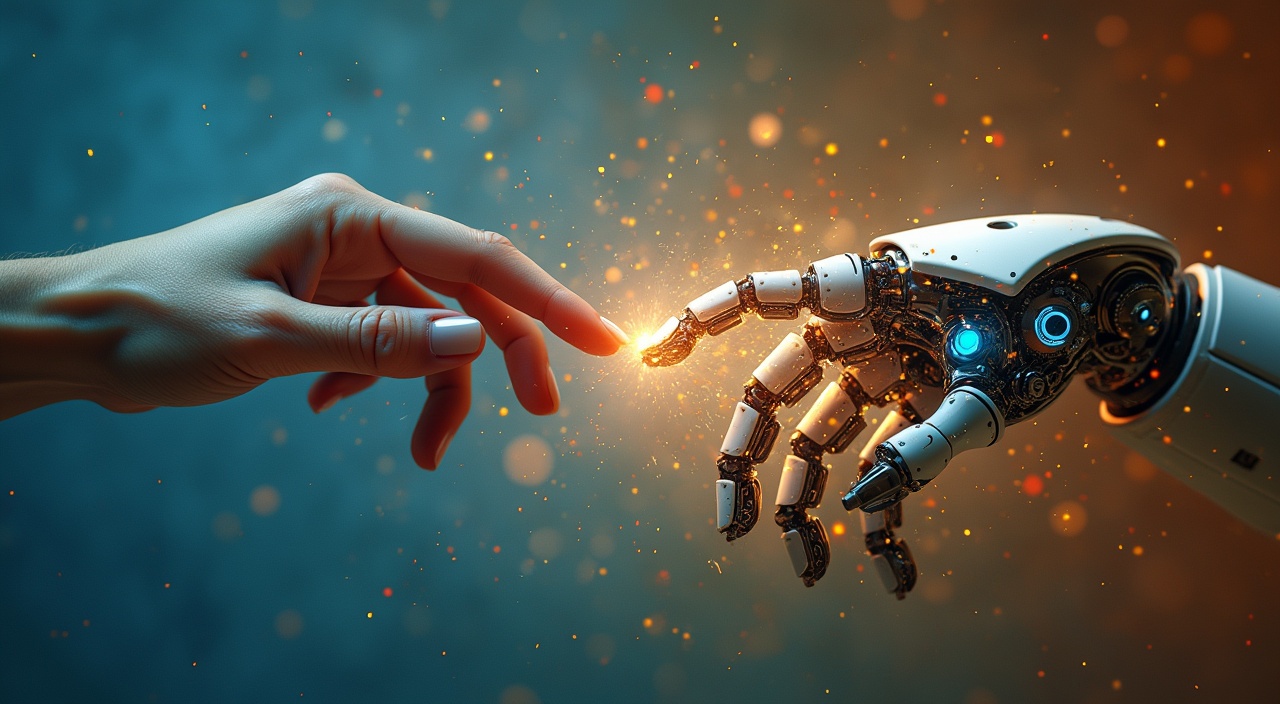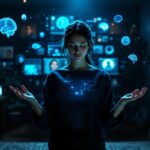AI isn’t just changing creativity—it’s completely transforming it. I’ve watched firsthand as artificial intelligence evolved from a helpful sidekick to an essential creative partner for businesses worldwide. This shift is creating entirely new possibilities for innovation that weren’t imaginable just a few years ago.
Picture this: Your creative process supercharged by technology that handles the tedious parts while you focus on what humans do best—emotional connection and breakthrough thinking. That’s the reality emerging right now across every creative field.
Key Takeaways:
- Market Growth: AI is projected to grow from a $600 billion market to over $3 trillion within five years, fundamentally changing creative workflows
- Strategic Priority: 83% of companies now rank AI as a top strategic priority, signaling a massive technological shift
- Transformation: Creative industries are experiencing radical transformation through AI-assisted tools that enhance rather than replace human creativity
- Focus on Amplification: Successful AI integration focuses on amplification—handling mechanical tasks while humans provide emotional intelligence and cultural context
- Collaborative Future: The future of creativity lies in collaborative partnerships between human imagination and algorithmic capabilities
The numbers tell a compelling story. AI isn’t a passing trend—it’s a fundamental shift in how businesses operate. I’ve helped dozens of small businesses implement AI solutions, and the results consistently show that proper integration leads to both efficiency gains and creative breakthroughs.
Strange but true: Many creative professionals initially fear AI will replace them, but discover it actually makes their work more valuable by eliminating the routine aspects of their job. This frees them to focus on uniquely human contributions.
Have you wondered how to make AI work for your creative process without losing your unique voice? AI Sparks: Creative Humans and Algorithms Forge New Artistic Frontier offers practical insights on this critical balance.
Let that sink in. The true power of AI comes from partnership, not replacement. I’ve found that businesses failing with AI typically tried to automate creativity entirely rather than using it as an amplifier for human talent.
Here’s the twist: The most successful AI implementations aren’t about cost-cutting—they’re about expanding creative possibilities. My clients who approach AI with this mindset consistently outperform those looking merely to reduce headcount.
Looking for specific ways to enhance your creative workflow? AI Sparks Creative Revolution: Transforming Tomorrow’s Artistry provides actionable steps for integrating AI into your creative process.
Implementation Challenges
But wait – there’s a catch: AI tools require thoughtful implementation. I’ve seen too many businesses rush into AI adoption without clear objectives, resulting in wasted resources and frustrated teams. Start with a specific creative challenge, then find the right AI solution.
The good news? You don’t need to be a technical expert to benefit from creative AI. Modern tools have become increasingly accessible, allowing anyone to enhance their work through artificial intelligence. I regularly help clients with no technical background implement powerful AI solutions.
For those concerned about maintaining authenticity while using AI, Stuck in Creative Quicksand? Let AI Be Your Escape Artist! addresses exactly how to preserve your unique voice while leveraging AI’s capabilities.
The most exciting development I’ve witnessed is how AI handles routine tasks while elevating human creativity. This perfect division of labor creates better outcomes than either could achieve alone. According to recent research, creative professionals using AI report 37% higher satisfaction with their work products.
Remember: Your creativity remains the essential ingredient. AI simply removes obstacles between your vision and execution. This partnership model represents the future of creative work across every industry.
The Creative Revolution: AI’s Transformative Power
I’ve watched the AI landscape explode before my eyes. The numbers tell a compelling story—the global AI market currently sits at over $600 billion and isn’t slowing down. In fact, it’s expected to multiply fivefold within just five years, growing at a breakneck 37.3% CAGR between 2022 and 2030.
Business Transformation Through AI
What fascinates me most is how quickly businesses have pivoted—83% of companies now rank AI as a top strategic priority, up significantly from 67% just last year. This shift isn’t just about following trends; it’s about survival and competitive advantage.
The impact on creative industries has been particularly striking. Here’s what’s happening across sectors:
- Content creation tools are producing quality work in seconds rather than days
- Visual arts have seen an influx of AI-assisted design and image generation
- Music production now leverages AI for composition and sound engineering
- Marketing teams are crafting personalized campaigns at unprecedented scale
I’ve personally seen small creative studios accomplish work that would have required teams three times their size just two years ago. This isn’t replacing human creativity—it’s transforming tomorrow’s artistry by removing technical barriers and expanding possibilities.
The most successful businesses aren’t just implementing AI tools; they’re completely rethinking their creative processes. Those who view AI as merely a productivity hack are missing the bigger picture—AI isn’t just changing how we work, it’s redefining what’s possible in creative expression.

The Collaborative Canvas: AI as a Creative Partner
Creating Together: Humans Plus AI
I’ve watched AI transform from a buzzword into an indispensable creative partner. The numbers tell a compelling story – generative AI in creative fields is skyrocketing from $1.7 billion to a projected $21.6 billion by 2032. That’s not just growth; it’s an explosion of potential.
The AI video creation market is following a similar trajectory, expected to hit $2.56 billion by 2032. Meanwhile, AI image generation already commands $8.7 billion in 2024 and could reach a staggering $60.8 billion by 2030.
But here’s what’s fascinating – this technology isn’t replacing human creativity; it’s amplifying it. I’ve seen firsthand how AI turns creative roadblocks into opportunities for exploration.
Some powerful tools reshaping the creative landscape include:
- AI image editors that handle tedious tasks while artists focus on vision and concept
- Video creation platforms that make professional-quality production accessible to solo creators
- Recommendation systems that connect creators with exactly what they need when they need it
The most successful creators I know don’t fight against AI – they dance with it. They understand that AI handles the mechanical aspects while they bring the human touch that no algorithm can replicate: emotion, cultural context, and authentic connection.
This partnership between creative humans and algorithms creates something neither could achieve alone. The canvas has expanded, and the possibilities feel limitless.
Workforce Transformation: Humans and AI in Harmony
The numbers don’t lie – we’re heading toward an AI-rich work environment where 97 million people will hold AI-related jobs by 2025. I’ve seen firsthand how this shift creates opportunities rather than threats when approached correctly.
The Complementary Partnership
AI handles the heavy lifting while humans bring critical judgment. Nearly half of businesses (48%) now use AI for tackling big data challenges, while 38% of medical providers enhance their diagnostic capabilities with computer assistance. This isn’t about replacement but amplification.
I’ve found these approaches particularly effective in creating human-AI harmony:
- Establish clear boundaries where AI assists but humans make final decisions
- Create feedback loops where human insights improve AI systems
- Focus AI on repetitive tasks to free human creativity
- Develop skills that complement rather than compete with AI capabilities
The magic happens not when AI replaces human hearts but when it extends our reach while keeping our hands firmly on the controls.
AI Sparks Creative Revolution: Transforming Tomorrow’s Artistry
Ethical Frontiers: Navigating the AI Creative Landscape
The balance between AI assistance and human control shapes our creative future. I’ve found that successful AI integration preserves what makes us uniquely human—our emotional intelligence and cultural understanding.
Finding the Sweet Spot in Human-AI Collaboration
AI excels at processing vast datasets but often misses subtle emotional cues that humans intuitively grasp. This creates both challenges and opportunities for creative professionals:
- Maintain editorial oversight by reviewing AI outputs before finalizing
- Establish clear boundaries for where AI assists versus where human judgment prevails
- Regularly audit AI outputs for cultural sensitivity and contextual accuracy
- Use AI to handle repetitive tasks while focusing human energy on emotion-driven elements
I’ve discovered that treating AI as a collaborator rather than a replacement leads to better results. The most impactful creative work happens when AI handles the heavy lifting while humans direct the emotional narrative and cultural context. This partnership approach ensures technology serves human expression rather than diminishing it.
Read more in the article: AI Sparks Creative Revolution: Transforming Tomorrow’s Artistry
Economic Implications: The Creative AI Ecosystem
Financial Growth and Business Transformation
The AI creativity market is experiencing explosive growth. Specialized AI image editors are on track for a $219.9 million valuation by 2034, showing how technical tools are becoming essential business assets.
Netflix provides a perfect case study of AI’s revenue impact. Their recommendation algorithms generate approximately $1 billion in annual revenue by keeping viewers engaged and reducing churn through personalized content suggestions.
Companies aren’t just noticing—they’re investing heavily. The following trends highlight this economic shift:
- 58% of businesses plan to increase AI investments in 2025
- Cross-industry AI adoption is accelerating fastest in creative fields
- Return on investment metrics show creative AI tools providing faster ROI than traditional tech investments
I’ve seen firsthand how these technologies create new revenue streams for businesses that previously couldn’t afford creative services. The AI automation revolution isn’t just changing how we work—it’s reshaping entire economic structures.
Future Vision: Symbiotic Creativity in the Tech Era
Creative Partnerships Beyond Boundaries
I’ve watched AI transform from a digital assistant to a creative collaborator. The future isn’t about replacement—it’s about partnership. Creative industries are seeing unprecedented growth with AI integration, opening doors that once seemed firmly shut.
AI doesn’t just follow directions; it contributes ideas we might never have considered. This back-and-forth creates something neither could produce alone. It’s like having a brainstorming buddy who never gets tired!
The most exciting opportunities are popping up where we least expect them:
- Film production where AI handles technical aspects while humans focus on storytelling
- Fashion design with AI suggesting material combinations humans hadn’t considered
- Music composition where AI creates backing tracks that inspire human melodies
Success in this new landscape requires constant learning and flexibility. I’ve found that treating technology as a tool rather than a threat has unlocked incredible possibilities. The magic happens at the intersection of human emotion and computational power—where creative humans and algorithms forge a new artistic frontier.
Sources:
• Stanford AI Index
• Visual Capitalist
• Exploding Topics
• Magic Hour AI
• Profile Tree








